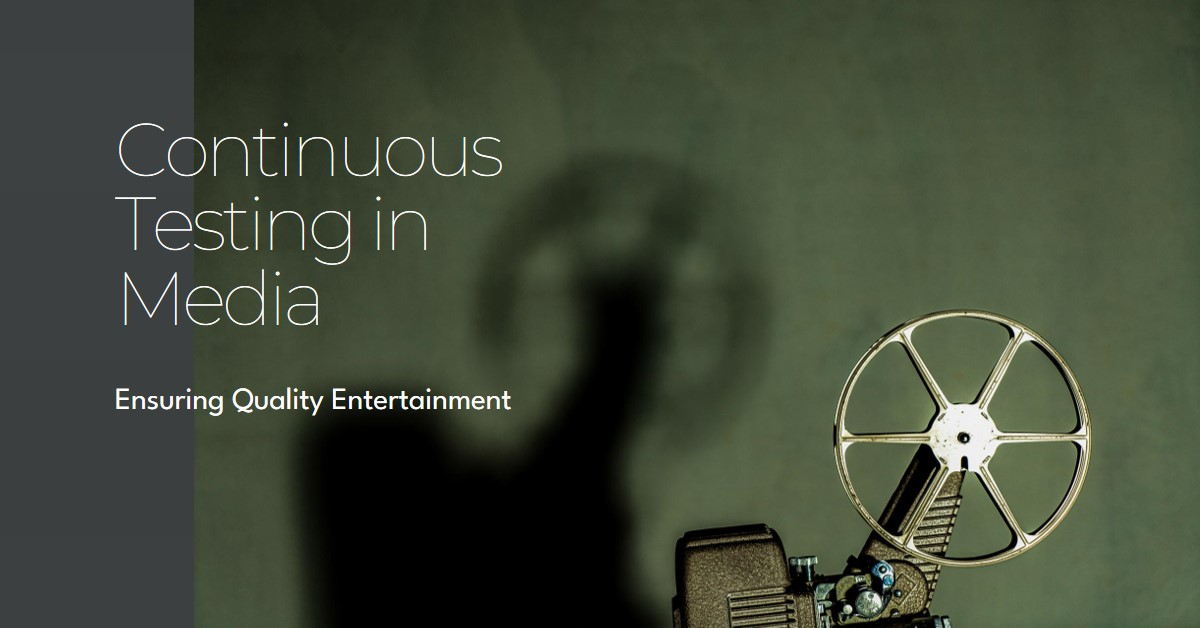In the dynamic landscape of media and entertainment, software plays a pivotal role in delivering immersive experiences to users. As technologies evolve and consumer expectations rise, companies within this sector are increasingly adopting continuous testing strategies to enhance product quality and accelerate development cycles. This article explores the best practices for integrating continuous testing in software development cycles specifically tailored to the media and entertainment industries.
Understanding Continuous Testing
Continuous testing (CT) involves the automated testing of software at every stage of the development process, from initial design to production. This approach ensures that feedback is immediate and defects are identified and resolved as early as possible, leading to higher quality outcomes and more efficient development timelines.
Best Practices for Integration
- Automate Where Possible: Automation is a cornerstone of effective continuous testing. In the context of media and entertainment, where user experience (UX) is paramount, automating repetitive tasks like regression testing and performance testing can significantly reduce time-to-market and improve quality. Automation also allows for more frequent testing without additional resource allocation.
- Leverage Virtualization and Containerization: With the complexity of media applications, particularly those involving rich media content like video and interactive gaming, leveraging virtualization and containerization technologies helps simulate diverse environments and device interactions. This approach allows teams to test applications under various conditions without the need for extensive physical infrastructure.
- Prioritize User Experience Testing: For media and entertainment applications, UX is a critical success factor. Continuous UX testing should be integrated to monitor how real users interact with the application across different platforms. Techniques like A/B testing, usability testing, and session recordings can provide invaluable feedback during the development phases.
- Integrate Development and Testing Teams: A collaborative approach between developers and testers helps in understanding the nuances of application requirements and potential UX challenges. This integration facilitates quicker feedback loops and more relevant test scenarios, tailored to the specific needs of media-rich applications.
- Focus on Performance and Load Testing: Media applications often experience high traffic and require robust performance under varying loads. Integrating continuous performance testing ensures that the application can handle expected and unexpected user loads, providing a seamless user experience without crashes or delays.
- Adopt Shift-Left Testing: Shift-left testing involves integrating testing early in the development cycle. This practice is crucial in media and entertainment software development, where changes in code can have significant impacts on application performance and user experience.
The Role of P99Soft
In this rapidly evolving sector, P99Soft emerges as a pivotal ally, providing specialized software testing solutions that cater specifically to the needs of media and entertainment companies. With expertise in optimizing UX in gaming through rigorous software testing practices, P99Soft helps ensure that applications are not only functional but also deliver the superior user experience demanded by today’s audiences.
Enhancing Continuous Testing in Media and Entertainment Software Development
As the media and entertainment sectors continue to push the boundaries of technological innovation, continuous testing (CT) must evolve to meet these changes. This section delves deeper into advanced strategies and tools that further integrate continuous testing within these industries, ensuring that software products not only meet but exceed the high expectations of today’s digital audience.
Advanced Integration Strategies for Continuous Testing
- Incorporate Real-Time User Feedback: Integrating real-time user feedback mechanisms directly into testing workflows enables developers to capture and respond to user experiences as they happen. This live data can be crucial for adjusting features that directly impact user engagement and satisfaction, particularly in interactive applications like gaming and online streaming.
- Utilize Cloud-Based Testing Environments: By leveraging cloud technologies, media companies can dynamically scale their testing environments to match the load and performance requirements of their applications under test. Cloud-based testing platforms offer the flexibility to simulate millions of users and test application performance under various network conditions, which is invaluable for applications that stream high-definition content.
- Implement Continuous Security Testing: Given the high volume of personal data processed by media and entertainment applications, security must be a priority. Continuous security testing, integrated into the development cycle, helps identify vulnerabilities early. This proactive approach not only protects users’ data but also guards against potential legal and reputational damage.
- Adopt Predictive Analytics in Testing: By applying predictive analytics to testing processes, companies can forecast potential areas of risk and direct testing resources more effectively. Predictive models can analyze past testing data and user interactions to predict where failures are likely to occur, allowing preemptive correction before software release.
- Enhance Testing with Artificial Intelligence (AI) and Machine Learning (ML): AI and ML can revolutionize continuous testing by automating complex decision-making processes involved in test case generation, execution, and data analysis. These technologies can rapidly adapt to changes in the application and user behavior, providing a more efficient and effective testing process.
FAQs on Continuous Testing in Media and Entertainment
- What makes continuous testing essential in the media and entertainment sector? Continuous testing helps address the rapid pace of change and high user expectations in the media and entertainment industry, ensuring software quality and performance are maintained at every stage of development.
- How does automation impact the cost of development? While the initial setup cost for automation can be significant, it reduces the long-term costs associated with manual testing, rework due to defects, and delayed product releases.
- Can continuous testing improve time to market? Yes, by identifying defects early and streamlining the feedback loop, continuous testing significantly reduces the development time, enabling faster market entry.
- What is the biggest challenge when implementing continuous testing in this sector? Handling the large scale and complexity of media content, along with ensuring the performance across diverse platforms and devices, is the most challenging aspect.
- How does P99Soft aid in implementing continuous testing strategies? P99Soft provides tailored testing solutions that integrate seamlessly with existing development processes, enhancing the capability to conduct comprehensive and continuous testing.
Conclusion
Integrating continuous testing into software development cycles is not just beneficial but essential in the media and entertainment sector, where the margin for error is minimal, and the demand for flawless user experience is high. By adopting best practices such as automation, virtualization, and collaborative testing, companies can not only enhance the quality and performance of their products but also achieve a significant competitive advantage. How ready is your company to transform its testing strategy?
Also know The Unseen Technology Powering Safety: A Deep Dive into Laboratory Fume Hood Exhaust Fans




